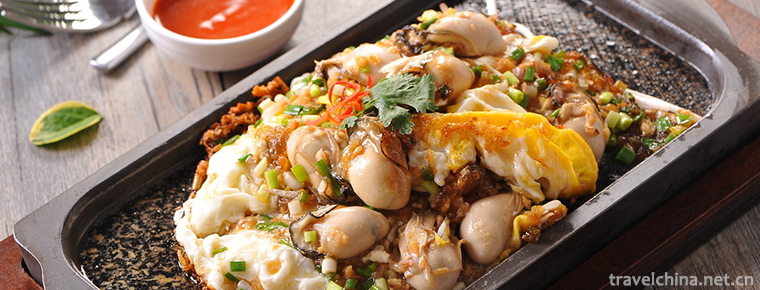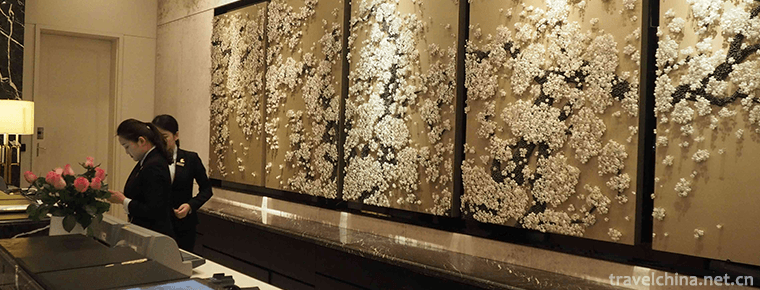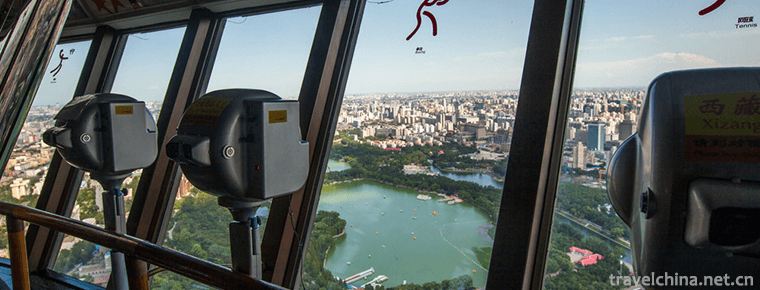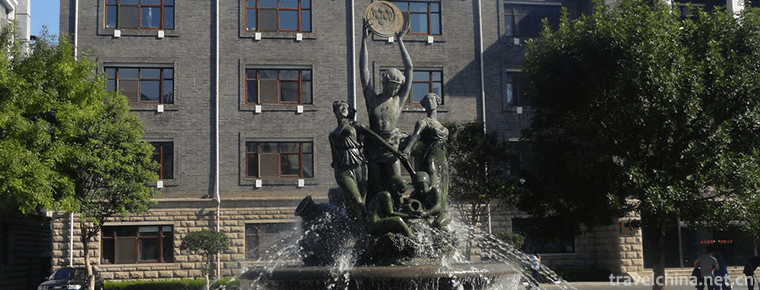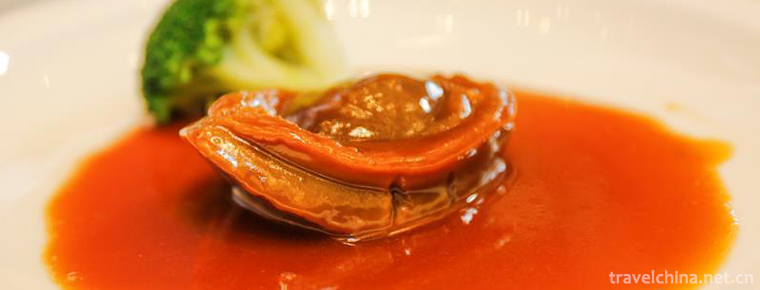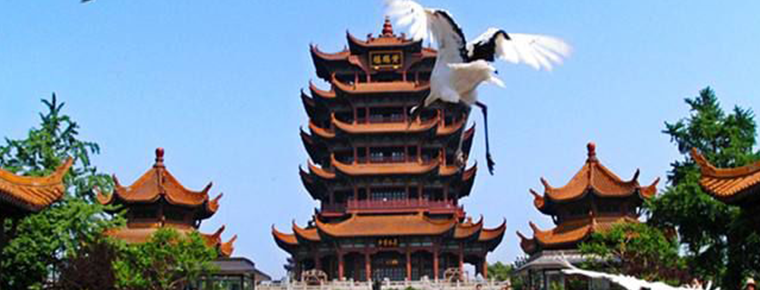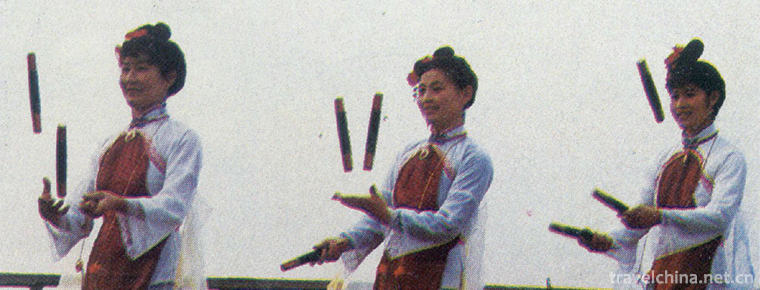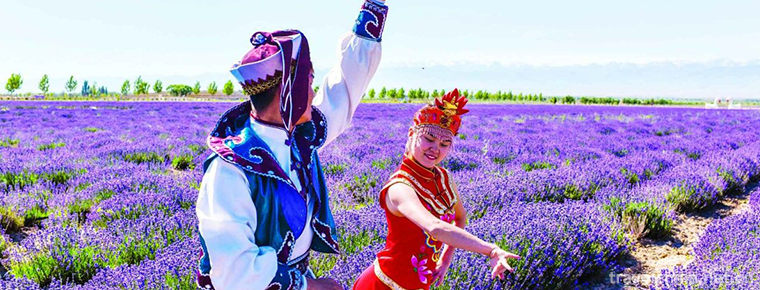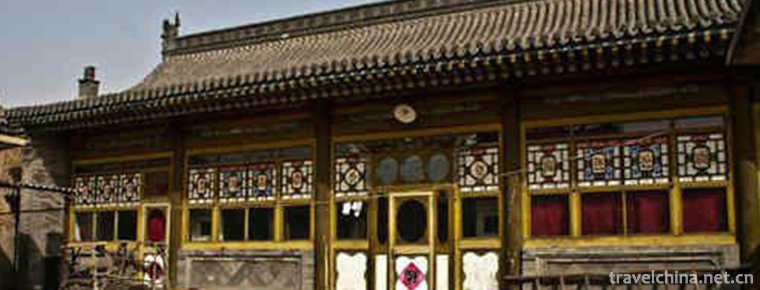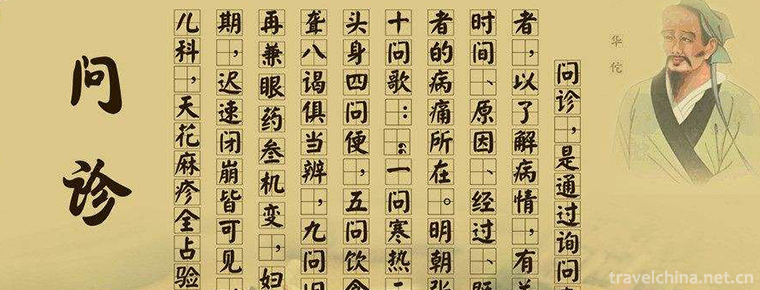Chengde Summer Resort and its surrounding Temple scenic spot
Chengde Summer Resort and its surrounding Temple scenic spot, World Cultural Heritage, established in 1994. It is located in Chengde City, Hebei Province. Summer Resort, also known as Rehe Hanging Palace, was built in the northern part of Chengde City in the early Qing Dynasty during the Kangxi and Qianlong periods. It was a summer resort for emperors of the Qing Dynasty and a departure court for the imperial government. Within the palace wall, which is 10 kilometers long, there are 72 scenic spots with the theme of Kang and Qian Dynasty built according to natural landscapes such as Rehe Spring and imitating the famous scenery of the south of the Yangtze River in the North. The Palace District
The palace area is located in the south of the Villa. The palace buildings are well-laid out, which is the epitome of the Forbidden City. Including the main palace, Songhe Zhai Wanqi Songfeng and Donggong four groups of buildings.
The main palace was the place where the Qing emperor handled government affairs, rested and held important ceremonies when he was in the mountain villa; Songhe Zhai implied "Songhe Yannian" for the Empress Dowager to live in, built in the Qianlong period; Wangai Songfeng was the place where the Qing emperor read memorials and books, and was the transitional building between the palace area and the lake area, similar in shape to the Eastern Palace of the Summer Palace; On the easternmost side of the palace area, the place where the Qing Emperor held a banquet ceremony was destroyed by the war.
Hall of smoke and waves
Long live Zhaofang passes through the gate hall in the north, and then there are seven halls in the north. It goes into two rooms in the deep. It is the main hall of the dormitory part of the main palace and the dormitory of the Qing Emperor in the villa. Kangxi called the place "open and clear", "surrounded by Xiuling, ten miles of Pinghu Lake, there is refreshing air", so the name of smoke wave refreshing, and ranked as the first 36 scenery of Kangxi Summer Resort.
Si know Bookstore
Originally named Qingkuang, it was the place where the Emperor of Qing Dynasty stopped for rest and changed his court clothes on his way to court and retreat. It was also the place where the Emperor of Qing Dynasty, as a kind of special treatment, received his trusted ministers and princes of minority nationalities. The so-called "Four Knowledge" refers to "Zhirou", "Zhigang", "Zhishi", "Zhizang". This is the summary and summary of the feudal ruling power. Qianlong met Banchen VI and Oubasi, the Mongolian leader of Turhut, here.
Yuan Scenic Area
Yuan scenic area is divided into Lake area, plain area and mountain area. To the north of the palace area is a lake area. The Lake area is a collection of Southern gardens and Northern gardens.
The landscape of Jiangnan gardens will be transplanted to other places. The lakes in the area are called "Saihu Lake", with a total area of 57 hectares. 28 hectares of embankment. Seihu Lake has nine lakes and ten islands. Jiuhu Lake is Jinghu Lake, Yinhu Lake, Xiahu Lake, Shanghu Lake, Chenghu Lake, Ruyi Lake, Inner Lake, Changhu Lake and Banyue Lake. There are five small islands: Wenyuan Island, Qingshushan Guan Island, Moonlight Jiangsheng Island, Ruyizhou Island and Wenjin Island. The islands include Jiedetang Island, Jinshan Island, Qinglian Island, Huanbi Island and Linfangshu Island. There are seven lakes in Jiuhu and eight islands in Shidao. Plain area is located to the east of Lake area, covering 53 hectares. There are four Pavilions along the lake in the south. From West to east, there are water clouds, Hao-Pu-Jian-Wan, Ying-Cha trees and Futian bushes. Other landscapes include Pingxiangpan, Chunhaoxuan, Warm Current Shubo, Wanshu Garden, Trial Horse, Yongyou Temple and Shrita. The Wanshu Garden in the area does not use civil engineering, only according to the Mongolian customs and habits set up a number of Mongolian yurts. Emperor Qianlong often summoned political and religious leaders of minority nationalities to hold barbecues here. The western and northern parts of the plain area are mountainous areas with an area of 422 hectares, accounting for four fifths of the total area of summer resorts. The mountains are steep and belong to the Fengyun Mountains of the remaining Yanshan veins. From north to south, there are four big canyons: Songyun Gorge, Lishuyu, Songlin Valley and Hazelnut Valley. On the cliff slopes of Fenggang, there are more than 40 buildings, pavilions, temples and houses built in mountainous areas during Kang and Qian dynasties, which are connected with the scenic imperial road and Yangchang footpath. The towering peaks, like natural barriers, are an important factor in regulating the climate of the Villa, which prevents the northwest cold wind from invading.
During the Kangqian period, more than 40 buildings were built in mountainous areas. Twelve temples with different architectural styles around the Summer Resort were built by the Qing government in order to unite ethnic minorities in Mongolia, Xinjiang and Tibet, using religion as a means of enclosure. Eight of them were directly managed by the Qing government, so they were called "Waiba Temple". According to the architectural style, temples can be divided into three types: Tibetan temples, Han temples and Han-Tibet combined temples. These temples blend the essence of Han, Tibetan and other national architectural arts, with magnificent momentum and Royal style. Summer Resort is different from other royal gardens. It inherits and develops the traditional gardening thought of Chinese classical gardens, which is "beautifying nature by human being, conforming to nature and surpassing nature". It carries out site selection and overall design according to topographic and geomorphological characteristics. It relies entirely on natural terrain, makes use of mountains and rivers, follows its nature, and merges into the south at the same time. The essence of northern gardening art is in one. It is a brilliant landmark in the history of Chinese gardens and a masterpiece of Chinese classical garden art. It enjoys the reputation of "miniature of Chinese geographical appearance" and "the highest example of Chinese classical gardens".
Grange Palace is different from the Forbidden City of Beijing and Shenzhen in its simplicity and elegance.
Chengde Summer Resort was once the summer palace of the Qing emperor in China. It's 200 kilometers from Beijing. It consists of imperial palaces, royal gardens and magnificent temples. Summer Resort is located in the north of the central area of Chengde City and on the narrow valley of the West Bank of Wulie River. Its architectural layout can be divided into two parts: palace area and garden area. The garden area can also be divided into three parts: Lake area, plain area and mountain area. There are 72 sceneries that Kangxi and Qianlong administered. There are more than 100 halls, halls, buildings, pavilions, pavilions, pavilions, pavilions, Xuan, Zhai, temples and other buildings. Its greatest feature is that there are gardens in the mountains and mountains in the gardens.
Summer Resort is a famous ancient imperial palace in China. It was built in the forty-second year of Kangxi (1703) and lasted 87 years in the fifty-fifth year of Qianlong. The Summer Resort covers an area of 5.64 million square meters. The palace walls around the Resort are gentle and undulating, which are 10,000 meters long. It is the largest existing classical imperial garden in China. It's twice as big as the Summer Palace and eight Beihai parks. Compared with the Forbidden City of Beijing, the Summer Resort has become the largest ancient imperial palace in China, taking the simple and elegant mountain and village interest as its style, taking the nature of natural mountains and rivers, and absorbing the scenery of the South and the north of the Yangtze River. Summer Resort and its surrounding temples are a closely related organic whole, and at the same time there are strong contrasts of different styles. Summer Resort is simple and elegant, and its surrounding temples are golden and brilliant. This was one of the important measures taken by the Emperor of Qing Dynasty to deal with ethnic relations. Due to the existence of many groups of historical and cultural heritage, summer resort and surrounding temples have become one of the key cultural relics protection units, ten national scenic spots and 44 scenic spots in China, and Chengde has thus become the first 24 historic and cultural cities in China. Summer Resort, together with the Summer Palace in Beijing, the Humble Administration Garden in Suzhou and the Residence Garden in Suzhou, is called the four famous gardens in China.
Mountain Resort in Chengde
Chengde Summer Resort, also known as "Rehe Hanggong", is located in the narrow valley north of the city center of Chengde, Hebei Province, north of China, covering an area of 584 hectares.
Summer resort was built in the forty-second year of Kangxi (1703 AD), Yongzheng (1723-1736 AD reign) was temporarily suspended, and construction continued from the sixth year of Emperor Qianlong (1741 AD) to the fifty-seventh year of Emperor Qianlong (1792 AD). Thirty-six sceneries of Emperor Qianlong (1736-1796 AD) and eight outer temples outside the villa were added. 。 The construction of the whole summer resort lasted for nearly 90 years. During this period, the Qing Dynasty flourished, and skilled craftsmen gathered here. In the fiftieth year of Kangxi Emperor Kangxi (reigned in 1662-1723 A.D.) wrote the title of "Summer Resort" on the afternoon gate of the villa himself. Summer resort is mainly divided into two parts: palace area and garden area.
Outer Eight Temples
Chengde's "Outer Eight Temple" is a large-scale Temple group built in the Qing Dynasty, which embodies the ancient architectural treasure house of Han, Mongolian and Tibetan architectural styles and arts. They are distributed in the East and north of Chengde Summer Resort and surround it like stars and arched moons. Villas are symbols of imperial power, which represent temple buildings of different nationalities, and symbolize national unity and national unity.
In fact, there are not only 8 temples in Waiba Temple. There are 12 original temples, namely Puren Temple, Pushan Temple (no longer exist), Puning Temple, Anyuan Temple, Pule Temple, Puyou Temple (mostly nonexistent), Putuo Zongcheng Temple, Guang'an Temple (no longer exist), Shuxiang Temple, Luohan Hall (mostly nonexistent), Xumi Fushou Temple and Kuixing Tower (no longer exist). The original building has been destroyed. Because it is divided into eight management places and located outside the fortress, it is called Waiba Temple. It took 67 years to build these temples, which can be said to be the product of the prosperous period of Kangxi and Qianxi. There are 7 remaining in 2018.
Putuo Zongcheng
Located just north of the Summer Resort, it imitates the shape of the Potala Palace in Tibet. Founded in the Thirty-second Year of Qianlong in the Qing Dynasty (1767 A.D.)
。 It was built by Qianlong to celebrate his 60th birthday and his mother's 80th birthday. This is the most splendid and largest temple in Waiba Temple. Putuo Zongcheng is a Chinese translation of Tibetan "Budala", so it has the reputation of "Little Budala Palace". The Temple layout is scattered naturally according to the mountain situation, and the pavilions and terraces are scattered around, covering an area of 220,000 square meters. There are stone lions, stone elephants, glazed tile archways and many white pink walls in Tibetan corner houses. The main building of the temple, Dahongtai, is magnificent with a height of 42.5 meters and a width of 59.7 meters. There are three halls on the platform. On the top of the hall, there are six and eight Jie pavilions. The top of the hall and the pavilion are covered with gold-plated copper tiles. The central part of Hongtai is the "Hall of the Unification of All Facts" on the top of the Jinwa Tile in the four corners of the double eaves. The whole temple is situated on the hillside, looking from a distance, magnificent and magnificent. There is a stele Pavilion and three monuments in the temple gate. They are engraved in four languages: Han, Manchu, Mongolia and Tibet. The main stele in the middle tells the story of the construction of the temple of Putuo Mahayana. The temples of Putuo Zongcheng and Xumi Fushou are all double eaves and spires covered with shining tiles, which are gold and copper tiles. The gold tiles and other gold ornaments of the two temples shared nearly 32,000 pieces of gold. The construction of Waiba Temple reflects the relatively enlightened national policy in the early Qing Dynasty.
Anyuan Temple
Commonly known as the Yili temple. Located on the hill southeast of Wuli River in the northeast of the summer resort, it imitates the shape of Guerza Temple in Ili, Xinjiang, and its central axis is opposite to the summer resort. It was founded in 1764 A.D. in the 29th year of Qianlong in the Qing Dynasty. The temple has a regular layout, a square and compact style, three walls inside and outside, and a three-storey Pudu Hall with double eaves and black glazed tile roof at the innermost level. Dian Tong is 27 meters high and magnificent. Appearance of three layers, three eaves, the lower single eaves, the upper layers of the heavy eaves Xie mountain top. Under the lower eaves are solid walls with trapezoidal blind windows and Tibetan architectural style. There are three empty wells in the middle of the hall, and the three layers are connected up and down. The top is decorated with an octagonal algae well, a medium plastic Panlong and a pearl at the mouth. On the middle of the first floor is a statue of Mother Buddha Ludu. There are murals with Buddhist stories on the four walls.
Xumi Fushou Temple
Xumi Fushou Temple is located in the north of the summer resort and east of Putuo Zongsheng Temple. Imitating the Zashrunbu Temple in Rige, Tibet. Founded in the forty-fifth year of Qianlong in the Qing Dynasty
(A.D. 1780). It was built by Emperor Qianlong specifically for the sixth Panchen Chan. Aug. 13, 1780 was the 70th birthday of Emperor Qianlong. Later, Erdeni VI, the head of Tibetan politics and religion, traveled a long way to Chengde to celebrate his birthday. Qianlong ordered people to imitate the place where Panchen was staying in Zhashlenbu Monastery in Xikaze and build a palace for Panchen. Xumi Fushou is a Chinese translation of Zashrumbu in Tibetan, hence its name. The temple is from south to north with stone bridges in front. The inner wall of Dahongtai Temple is surrounded by three floors of buildings. The Miaogao Grand Temple is built in Zhongjian, where the sixth Panchen Buddhist scriptures are delivered. There are East Hongtai in the southeast of Dahongtai and Lucky Faxi Hall in the west, which is the bedroom of Panchen Chan. The center is a double eaves hall, a magnificent hall, commonly known as the Jinwa Hall. It is the largest hall in the temple. The top of the hall is covered with gold and copper tiles. There are eight golden dragons on the four ridges. The temple was built at great speed. In June 1779, when Panchen set out from the Shilunbu Monastery in Houzang, construction began. When he arrived in Chengde in July of the next year, he achieved great success. It is a miracle to complete such a large project in one year under the material conditions at that time. Panchen has lived here for over a month. This temple can be regarded as a model of the combination of Tibetan and Han architecture and art.
Temple of Pu le
Pule Temple is commonly known as "Round Pavilion". Located in the south of Anyuan Temple and in the northeast of Summer Resort. Hammer Peak back, facing the Wuli River, hidden in a pine forest, the environment is particularly good. During the reign of Qianlong in the Qing Dynasty, the leaders of the minority nationalities in the northwest frequently met with the Emperor of Qing Dynasty and celebrated the whole world. In the 31st year of Qianlong (1766), they set up Pule Temple in the East and West dynasties. The west direction of the temple gate is because the summer resort is in the west, facing the mountain villa, the temple presents the situation of many stars arched the moon, symbolizing the unification of multi-ethnic countries. Architectural layout is divided into two parts, the front from Shanmen to Zongyin Temple is the traditional form of Han temples. The rear part is the Tancheng, with three walls. On the second floor, there are four corners and four centers of the wall, each with a glazed Lama Pagoda. Then on the platform, build Xuguang Pavilion, imitate the shape of Beijing Temple of Heaven Prayer Hall, the top of the pavilion has a large circular Dou Bazao Well, there are two dragon opera beads, exquisite production, brilliant gold and blue, with very high artistic value.
Puning Temple
Located in the north of the Summer Resort. Because there is a huge wooden Buddha statue in the temple, also known as the "Great Buddha Temple". It was founded in the twentieth year of Qianlong in the Qing Dynasty (1755 A.D.).
The temple is large in scale and integrates the architectural forms of Han and Tibetan temples. The first half is the regulation of Buddhist temples, including the monument pavilion, the Temple of Heavenly Kings, the Palace of Daxiong, etc. The latter part is the Lamaist Mandala-Tancheng French. The main building of the temple is the Mahayana Pavilion, in which a tall statue of Guanyin with thousands of hands and eyes is offered, so it is also called the Great Buddha Temple. The Mahayana Pavilion is 36.75 meters high with six layers of eaves on the front. The 1000-handed, thousand-eye Guanyin Bodhisattva statue in the Pavilion is 22.23 meters high and weighs about 110 tons. It is carved out of five kinds of wood: pine, cypress, elm, fir and lindrical linder. The interior of the Great Buddha consists of four layers, with a cypress stump 65 cm in diameter in the middle as the backbone and reaching the top of the head. On the top of the Buddha stands a Buddha of unlimited longevity, 1.4 meters high. The Great Buddha is a rare treasure in China's art treasure house - one of the largest existing wooden statues in China. It is said that it is also the largest wooden Buddha statue in the world. The roof of Mahayana Pavilion is a special building. The highest roof is surrounded by four small roofs with a large roof. It has a peculiar style. The construction of this temple in Qianlong shows the respect of minorities in Qing Dynasty.
Temple of universal benevolence
Located on the East Bank of Wulie River east of Chengde Street. In the fifty-second year of Emperor Kangxi in the Qing Dynasty (1713), the Mongol princes celebrated Emperor Kangxi's 60th birthday.
The book "Request" was written outside Chengde Summer Resort to build a monastery to celebrate the birthday. Emperor Kangxi delighted in "Enquan", and then built the two temples of Puren and Pushan. Pushan Temple has long been abandoned, and Puren Temple became the only remaining temple in Kangxi period, which is even more precious. Pu Tongpu, universal and broad, has the emperor's deep benevolence and universal meaning. In the 67 years from 1713 to 1780, Emperors Kangxi and Qianlong successively built 11 large temples in the eastern and northern outskirts of the Summer Resort. Among them, there were eight temples with "salary silver" and Eight Temples outside the capital master. There are 7 existing temples: Shizigou in the north of the Summer Resort. From the east to the west, there are temples of Mifushou and Putuo Zongcheng, as well as special temples. Waiba Temple is built like a summer resort surrounded by stars, showing the momentum of setting off clouds and setting off the moon. It symbolizes the relationship between the people of all ethnic groups in the frontier and the Qing Central Government, and shows the historical process of the unification, consolidation and development of our multi-ethnic country. The structure of Puren Temple is the "seven halls of Jialan" style of Han temples, surrounded by retaining wall rings. Three main halls are arranged on the main axis of the mountain gate: the Heavenly King Hall, the Ciyun Puyin Hall and the Baoxiangchang New Hall. Six statues of Buddha are offered in the Temple of Heavenly Kings: the smiling Maitreya Buddha, the solemn and solemn Wei Tuan Heavenly General, and the four heavenly kings who tolerate evil looks. Ciyun Puyin Hall, with single eaves and hilltops, painted in gold, carved beams and painted pillars, is dazzling. The temple is dedicated to the Buddha of the past, the Buddha of Sakyamuni and the future Buddha of Maitreya. Sakyamuni Buddha was flanked by two of his disciples, Gaye and Ananda. Eighteen Arhats with different postures are offered on the Eastern and Western altars. On the ceiling, there are six words of "ah, ah, trumpet, mimi, listen" in the Secret Sect. Baoxiang Changxindian, the top of single eaves hard mountain, the eaves and pillars are painted in gold. Nine immeasurable Buddhas, Amitabha Buddha, are offered in this sacrifice. He is the bishop of the Western Paradise World. There are nine grades in the world of bliss, one Buddha in each grade. Eight Bodhisattvas stand on both sides of the Buddha. In 1987, Puren Temple was renovated, and the Buddha statues were bright and colorful.
Shuxiang Temple
Located in the north of Chengde Summer Resort and east of Putuo Zongsheng Temple, it was built in the 39th year of Qianlong (1774) and imitates Shanxi Wutai Mountain Shuxiang Temple.
It is a temple in the form of the Han nationality. The main hall of the temple is the Huicheng Hall, where Guan Shiyin, Wenshu and Puxian are offered. It is like a three-storey Nanmu Buddha niche in front and left, with 304 original Buddha statues. Unfortunately, it was stolen by warlords in its early years. There is a Nanmu Longevity Pagoda on both sides, which is for the infinite longevity Buddha. The back of the palace is the Yanting section, which uses natural overlapping stones and roundabouts, with rockeries and culverts laid out in between. Baoxiangge Pavilion, with the inscription of Emperor Qianlong on its top and the statue of Manjusri Bodhisattva in wooden carvings, sits on the lotus terrace and is 12 meters high. The waiter's armour is about a few meters high. Now it has been destroyed. In the north of the pavilion, there are such Pavilion building sites as Yunlai, Yunjing, Jihui, Huixi, Qingliang and Qiyun. At that time, there were 50 Manchu Lamas in the temple, where they recited the Manchu Tibetan scriptures translated during the Qianlong period.
Kuixing Building
Founded in Daoguang in the Qing Dynasty (AD 1828), the original building stands on the top of the half-wall mountain, is a three-hard-hill cloth clay tile hall, at that time the incense was in full swing.
In order to facilitate the exchange of fragrance, we also set up a dock and tea shed under the half-wall mountain. Later, the Queens Tower was destroyed due to disrepair. The newly built Quexing Tower is located on the half-wall mountain of the original site, covering more than 100 mu. Its building scale is much larger than that of the original building, and it adds many new contents with rich cultural connotations. The whole building is magnificent and magnificent in color. It is situated on the hill and scattered in different places. The main ornamental spots of Kuixing Tower are located in three districts: the square garden area, palace area and garden greening area: Longmen, Zhongdou Palace, 72 Fudi, Rongshi Lezhen Palace, Hongwen Palace, Kuixing Main Building, Ping Tiantai, Smart Spring and Huanshan Trestle Road. Among them, Rongshi Lezhen Hall is a hall for East and west, offering eight statues of "longevity, happiness, happiness, harmony" and "happiness, luxury, wealth and security", respectively. It has a unique style with beautiful painted images and carvings. Hongwen Hall is a group of important buildings in the scene, which is skillfully connected by the front stele gallery and the mountain climbing corridor on both sides.
The Temple selected 68 influential thinkers, writers, artists, scientists and other celebrities in the history of our country, selected the essence of their life, and carved on the stele with images and brief achievements. On the top of the stele there were large-scale scenic wood carvings imitating mahogany, which recorded the painstaking reading of ancient Chinese "hanging beams", "chiseling walls and borrowing light" and so on. 11 examples. There are also 16 tablets featuring Quixing culture in the hall. The whole group of sculptures constitutes a historical picture that inspires future generations, stimulates progress and shines brightly. The main building of Queen Star is dedicated to the image of Queen Star, which is above the top of the list.
Summer Resort and its surrounding temples, with its outstanding universal value, constitute an important part of the world cultural heritage. The reasons are as follows.
1. Summer Resort is a garden-style imperial palace of the Qing Dynasty in China. It has rich social, political and historical significance. It is a summer palace built by the emperor of the Qing Dynasty in order to achieve the political purpose of appeasing, uniting the minority nationalities in the frontier of China and consolidating the national unity. After the construction of the Summer Resort, the Emperor of Qing Dynasty spent a lot of time here every year dealing with important military and political affairs, meeting foreign envoys and leaders of minority nationalities in the frontier, making it the second political center of the Qing Dynasty in China. A series of important events, important relics and important cultural relics happened here have become the historical witness of the final formation of China's multi-ethnic unified country.
2. Summer Resort and its surrounding temples are typical examples of the integration of ancient imperial palaces and royal temples in China.
Summer Resort and its surrounding temples originated in the last flourishing period of Chinese feudal society, the prosperous period of Kang, Yong and Qian dynasties, and lasted for eighty-nine years. They were built with the national resources. It is the crystallization of emperor's paradigm and imperial temple building experience. It has become a model work in the Imperial Palace model system of China's two major gardening systems, which are also called private gardens. Landscape construction realizes the combination of "palace" and "garden" in form, and the high unity of the functions of "Li Chao listen to politics" and "recreation and entertainment". Temple buildings have distinct political functions.
3. Summer Resort and its surrounding temples symbolize the great achievements of ancient Chinese gardening and architectural art.
Summer Resort and its surrounding temples are the largest ancient imperial paradigm and royal temples in China. It concentrates on the achievements of ancient Chinese gardening and architectural art and is a creative masterpiece. In gardening, it inherits and develops the traditional gardening thought of Chinese classical gardens, which is "beautifying nature by human being, conforming to nature and surpassing nature", summarizes and creatively uses various gardening materials and techniques, making it an outstanding representative of natural landscape gardens and architectural gardening. In architecture, it inherits, develops and creatively utilizes various architectural techniques, picks up the essence of famous gardens and temples in North and South China, imitates and creates, and expresses the architectural theme of "moving heaven and shrinking earth in your heart". In the specific construction of gardens and temples, single and group buildings, summer resorts and surrounding temples have realized the integration of ancient Chinese gardening and architectural art, which includes most of the ancient Chinese architectural images such as pavilions, pavilions and pavilions. It demonstrates the superb skills of ancient Chinese wooden frame structure architecture, and realizes the combination of wooden frame structure and masonry structure, Chinese architectural form and ethnic minority architectural form. In addition, architectural decoration and Buddhist statues, the use of the highest skills in ancient China, constitute a wonder in the history of ancient Chinese architecture.
4. Summer Resort and its surrounding temples are material materials for the world to understand Chinese culture.
Summer Resort and its surrounding temples, whether gardening or architecture, are not only the simple use of materials and techniques, but also the integration of Chinese classical philosophy, aesthetics, literature and other cultural connotations, making it a microcosm of Chinese traditional culture.
As mentioned above, such a masterpiece of art with worldwide prominent universal value can only be permanently handed down and better play its world significance if it is included in the World Cultural Heritage for protection.
Chengde Summer Resort and its surrounding temples were listed in the World Heritage List (No. 200-011) in 1994 according to the criterion C (II) (IV) for selecting cultural heritage. World Heritage Committee evaluation: Chengde Summer Resort is the summer palace of the Qing Dynasty, located in Hebei Province, built from 1703 to 1792 A.D. It is a huge complex of palaces and other buildings dealing with government affairs and holding ceremonies. Temples and royal gardens with different architectural styles are skillfully integrated with the surrounding lakes, pastures and forests. Summer Resort not only has a very high aesthetic value, but also retains the rare historical relics at the end of the development of Chinese feudal society.






















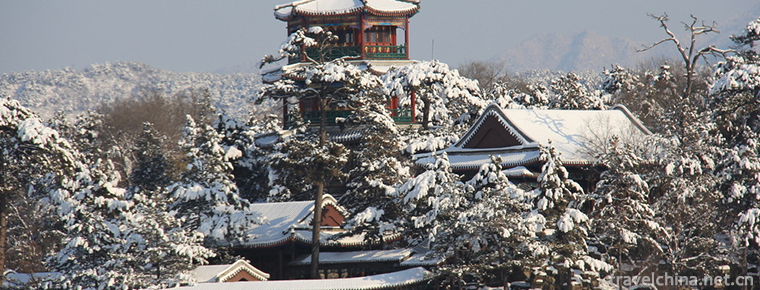
-
Oyster omelet
Oyster fry is a common home dish, which originated in Quanzhou, Fujian Province, and is one of the classic traditional snacks in southern Fujian, Taiwan, Chaoshan and other regions..
Views: 260 Time 2018-11-02 -
Longting Hotel East China Sea Shenzhen
Langting's history can be traced back to 1865. The grand opening of Langting Hotel in central London, England, has become the first truly "luxury hotel" in European history, creating a brill.
Views: 582 Time 2018-12-16 -
Central Radio and Television Tower
The Central Radio and Television Tower, now a national 4A scenic spot, is located on the west side of West Third Ring Road, Haidian District, Beijing. Near the Space Bridge, it faces beautiful Yuyuant.
Views: 141 Time 2018-12-22 -
Zhangyu Wine Culture Museum
Zhangyu Liquor Culture Museum is one of the few professional museums in the world wine industry. It is located at the original site of Zhangyu Company, Da Ma Lu, Zhifu District, Yantai City, Shandong .
Views: 169 Time 2019-03-17 -
Eight dishes
Eight-flavor dish is a delicacy, the main ingredients are green pepper, 1000 grams; soybean, 1000 grams; head vegetables, 3000 grams; sugar, 250 grams; vinegar, 250 grams; salt, 250 grams; soy sauce, .
Views: 447 Time 2019-03-27 -
Legend of Yellow Crane Tower
The legend of the Yellow Crane Tower has a long history, and has been accompanied by the repeated destruction and construction of the Yellow Crane Tower.
Views: 107 Time 2019-05-04 -
Three stick drum
Sanwanggu is a kind of folk singing form widely spread in Youyang of Chongqing, Yongshun County of Longshan County in Western Hunan, Zhangjiajie and Wuyang, Tianmen and Enshi Prefecture in southwester.
Views: 299 Time 2019-06-12 -
Sibo Belem Dance
"Bailun" dance is the generic name of Xibo self-entertainment dance and the first type of Xibo folk dance. It originated from an ancient dance that imitated life and production posture in th.
Views: 128 Time 2019-07-01 -
Construction Techniques of Yanmen Folk House
Yanmen folk house construction technology is a traditional skill with local characteristics in Xinzhou, Shanxi Province. It was listed in the third batch of intangible cultural heritage list in 2011. .
Views: 129 Time 2019-07-10 -
Diagnosis of Traditional Chinese Medicine
Diagnosis of traditional Chinese medicine, one of the traditional Chinese medicine, is declared by the Chinese Academy of Traditional Chinese Medicine, one of the national intangible cultural heritage.
Views: 325 Time 2019-08-10 -
Beijing Film Academy
Beijing Film Academy is a University of art with film history and profound film culture. Its predecessor is the Institute of Performing Arts founded in 1950. It was relocated in 1951 and renamed as th.
Views: 159 Time 2019-09-06 -
Science and technology of Panzhihua
In 2018, there were 2865 patent applications in Panzhihua. The output value of high-tech industry reached 53.1 billion yuan, and 2015 science and technology projects were arranged, including 780 high-tech projects, 320 new high-tech projects in that year, and 16 science and technology.
Views: 342 Time 2020-12-14
